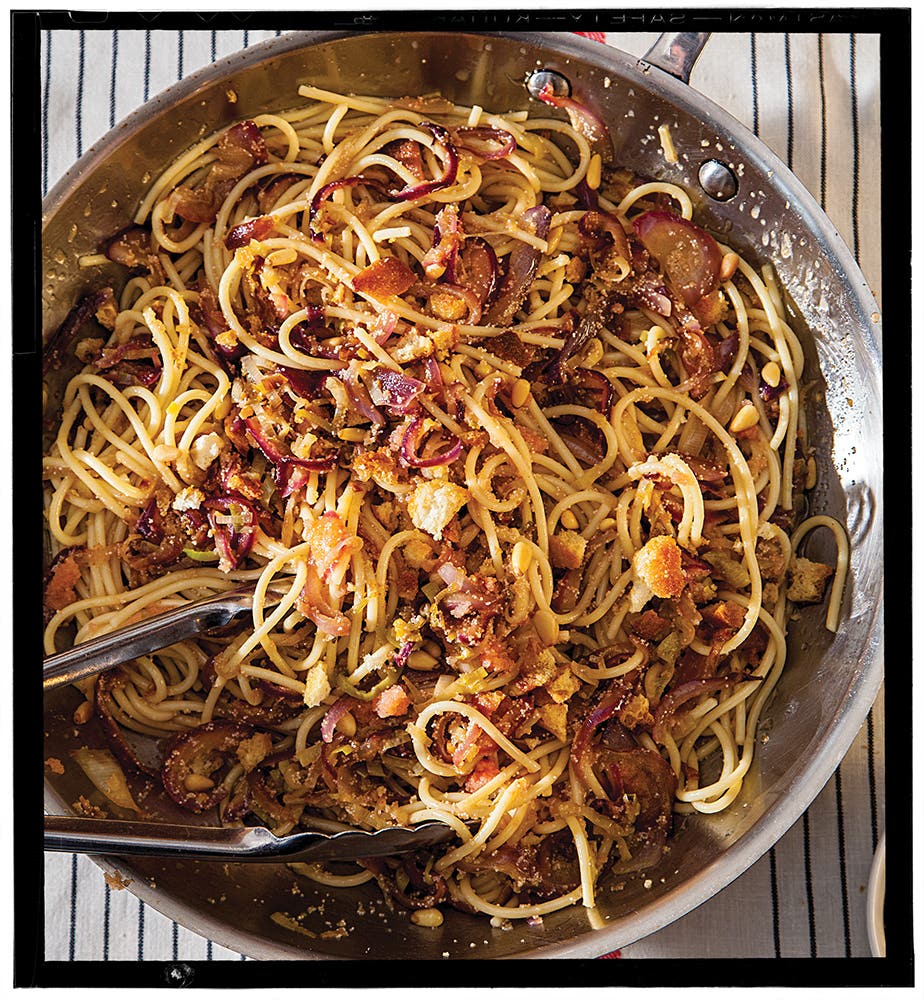
I have never been able to keep a diary, and I've always been sorry about it. That's especially true when I run into an old acquaintance who tells me about the fun we had at some party I'm sure I attended but just can't seem to remember. At the very least I could have managed to keep a travel diary. I've been to so many places. And no snapshot could possibly convey what it was like to be in Afghanistan in 1970 or Prague soon after the Berlin Wall came down.
The closest thing I have to a diary is food—that is, my memories of food. Luckily, my husband, Howie, has a stronger memory than I do. He has an uncanny ability to recall and re-create the dishes we've eaten together during the past 40 years. The meals he constructs have the power to evoke a particular moment in a particular place—to bring back sounds and smells and flavors that we otherwise might have forgotten.
Like a diary, these dishes remind us of both good times and bad. One cold, miserable winter, I commuted three hours each way for a teaching job in Baltimore, and every so often—out of pity—Howie would accompany me. To cheer ourselves up, we'd splurge on dinner at the DoubleTree Hotel restaurant on the edge of Johns Hopkins University's campus that served an amazing grilled cod with clams on a bed of potatoes sliced paper thin with a mandoline and broiled until they were slightly crispy around the edges. That awful winter, that arduous job, are far in the past, but we can recall their saving grace over a dish of cod, clams, and potatoes.
By far the best meals Howie makes are like the one we're having tonight—a single dish that corrals different memories from different locales and combines them in a whole new way. In this case it's tarako spaghetti, pasta with pollock roe, bread crumbs, leeks, and dashi. It's a delicious dish, but the pleasures go far beyond taste: It is like a lightning tour of all the places we've been that inspired it. Twirling each forkful is as good as watching a home movie of memorable meals, taking us back to the Italian town of Matera, farther south to Sicily, eastward toward Japan, then back here to our house in New York's Hudson Valley on this spring evening.
In Catania, on the eastern coast of Sicily, we once ate lunch at a small restaurant with a view of a fish market that was sunny and beautiful, its aisles lined by narrow troughs running with fish guts. Now, as I eat, I can recall the fishermen who walked into the market shouting because they had a freshly caught tuna that must have weighed 150 pounds. Our waiter ran outside to join everyone else, all of them just standing there staring at the giant tuna. Then he came back in and served us the greatest pasta ai ricci, pasta with sea urchin, we've ever tasted.
Digging deeper, we remember how, a week or so later, in the Mandralisca Museum in the town of Cefalù, not far from Palermo, we saw a Greek vase, painted four centuries before the birth of Christ, on which a tuna vendor was depicted, slicing into a giant fish that looked shockingly like the one we'd just seen in Catania.
Howie has also laced the pasta with his version of the bread crumbs we enjoyed so much in Matera, the gorgeous biblical-looking city in southern Italy where Pasolini and, later, Mel Gibson made their movies based on the New Testament gospels. (You can stay in cave hotels there; it's one of my favorite places on earth.) In Matera they serve pasta with dried red peppers and bread crumbs and lots of olive oil. While fried bread crumbs are considered poverty cuisine, there they are raised to the realm of the celestial. And in Howie's dish, they add a pleasant element of crunch to the pasta, as well as the fish roe, which takes us back to Kyoto, where Howie discovered the life-changing powers of dashi, Japan's endlessly versatile fish and seaweed stock, which ramps up the pasta's flavor, delivering the perfect amount of sweet, sour, and salt to each bite.
As a child, I did try keeping a diary. And somewhere in my house, most likely in a dusty filing cabinet, are several velvet-covered books embossed in gold script with the words “My Diary.” Inside they're all more or less the same: five, maybe six consecutive days of writing in the heartbreakingly perfect printing of my former self—“School was fun today!” “Bobby is a little pig!”—then a gap of a few days, then a day of writing, then a week empty, a few lines, then nothing. A fat little book with a broken lock. The dish we're eating now brings back something far more vivid: a market in Catania, a bustling trattoria in Matera, a restaurant in Kyoto. It also holds the promise of a future memory, of this very moment in time—a memory of eating a scrumptious pasta dish with my husband in our house in the country.
Francine Prose is the author of Lovers at the Chameleon Club, Paris 1932 (Harper Collins, 2014).
FACT:
The 19th-century English novelist William Makepeace Thackeray was_ an early fan of food memoirs,_ once writing that, “Next to eating good dinners, a healthy man with a benevolent turn of mind, must like, I think, to read about them.”
Keep Reading
Continue to Next Story










